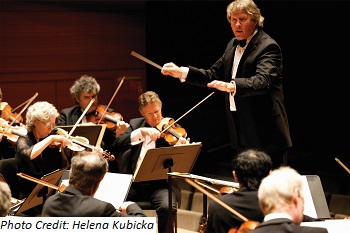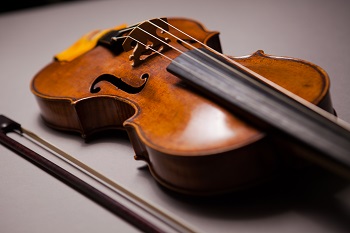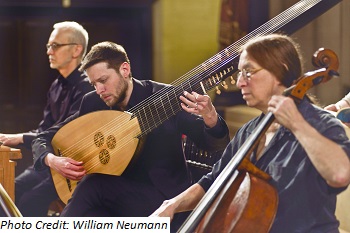Blast from the Past
Step Back into Music History with the American Classical Orchestra
Bach, Beethoven, and Mozart have been immortalized as giants of music. Their work is so embedded in Western culture that by the time a child is old enough to walk, he or she can probably recognize a tune or two written by one these composers. So it may come as a surprise that the renditions most people are accustomed to are quite different from what the original composers had in mind. The American Classical Orchestra, however, invites visitors to hear familiar pieces of music in a whole new way.
 The ACO is New York City's premier period instrument orchestra and is a leader in the original instrument movement worldwide, specializing in music composed from the seventeenth through nineteenth centuries. Using historical techniques and instruments, the orchestra strives to recreate the sounds as the composers would have known them. "This is not a reenactment," says ACO founder and artistic director Thomas C. Crawford. "If we didn't have this repertoire, it wouldn't be worth it."
The ACO is New York City's premier period instrument orchestra and is a leader in the original instrument movement worldwide, specializing in music composed from the seventeenth through nineteenth centuries. Using historical techniques and instruments, the orchestra strives to recreate the sounds as the composers would have known them. "This is not a reenactment," says ACO founder and artistic director Thomas C. Crawford. "If we didn't have this repertoire, it wouldn't be worth it."
The original instrument movement emerged in the 1960s and 1970s in Europe and has since gained an international recognition as prestigious music organizations around the world have come to appreciate its value. The movement rests on one seemingly basic observation. "These composers wrote for the instruments they had available to them," Crawford explains. "Mozart and Beethoven wrote for those sounds, and those sounds were created for those composers."
 The violins, horns, woodwinds, and other instruments that make up today's orchestra existed in significantly different forms at the time of the great classical composers, and they produced noticeably different sounds. "Instruments evolved as people wanted larger and more virtuosic orchestras," Crawford says. "They added valves to the horns, for example, so they could play more chromatic and advanced music. But the consequence is that the instrument no longer has the hunting horn sound that Beethoven would have been familiar with."
The violins, horns, woodwinds, and other instruments that make up today's orchestra existed in significantly different forms at the time of the great classical composers, and they produced noticeably different sounds. "Instruments evolved as people wanted larger and more virtuosic orchestras," Crawford says. "They added valves to the horns, for example, so they could play more chromatic and advanced music. But the consequence is that the instrument no longer has the hunting horn sound that Beethoven would have been familiar with."
Another innovation that has changed the sound of the orchestra is the materials used for violin strings. While modern violin strings are normally made of metal or synthetic materials, baroque and classical string instruments were made with gut, a material made from the natural fibers found in sheep intestines. As Crawford explains, "As much had been gained as was lost. With this music, a whole string section of violins strung with gut just works. The texture opens up--you never have to say that the violins are too loud. You could never play Stravinsky on these instruments. But with this music, it just sounds right."
 Such a thing is not as easy to recreate as it sounds. "For the musicians, it's a huge transition. It requires purchasing an additional instrument and relearning techniques from the past," Crawford says. "Twenty years ago, we couldn't have done this--we didn't have the players. But little by little, we're acquiring players. It's related to work--as the movement has grown, there are more opportunities for these musicians. Universities and schools around the world are beginning to offer this as a course of study."
Such a thing is not as easy to recreate as it sounds. "For the musicians, it's a huge transition. It requires purchasing an additional instrument and relearning techniques from the past," Crawford says. "Twenty years ago, we couldn't have done this--we didn't have the players. But little by little, we're acquiring players. It's related to work--as the movement has grown, there are more opportunities for these musicians. Universities and schools around the world are beginning to offer this as a course of study."
Devoted fans and newcomers alike can find something new to enjoy at one of ACO's performances. "In the end, the most rewarding part is when we have a collective experience. When you find it, you can tell--it's about hearing something beautiful."
-- By Ettractions Digital Content Editor EMILY JARMOLOWICZ
Pennsylvania: Philadelphia
New York: Hudson Valley
Other States: Connecticut New Jersey New York Pennsylvania

You are not logged in. To login or create an account please click here